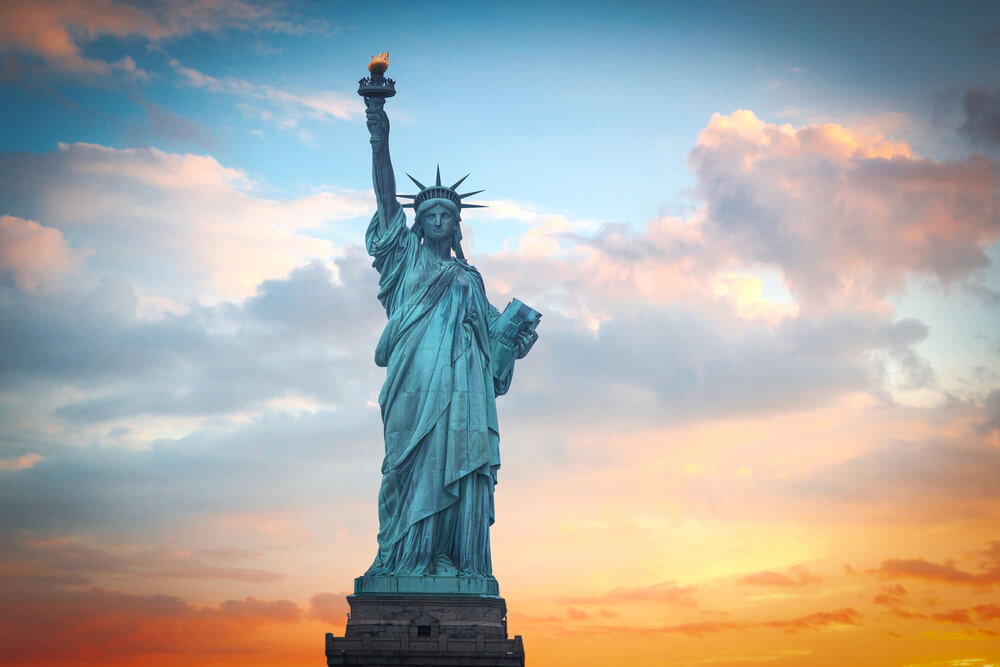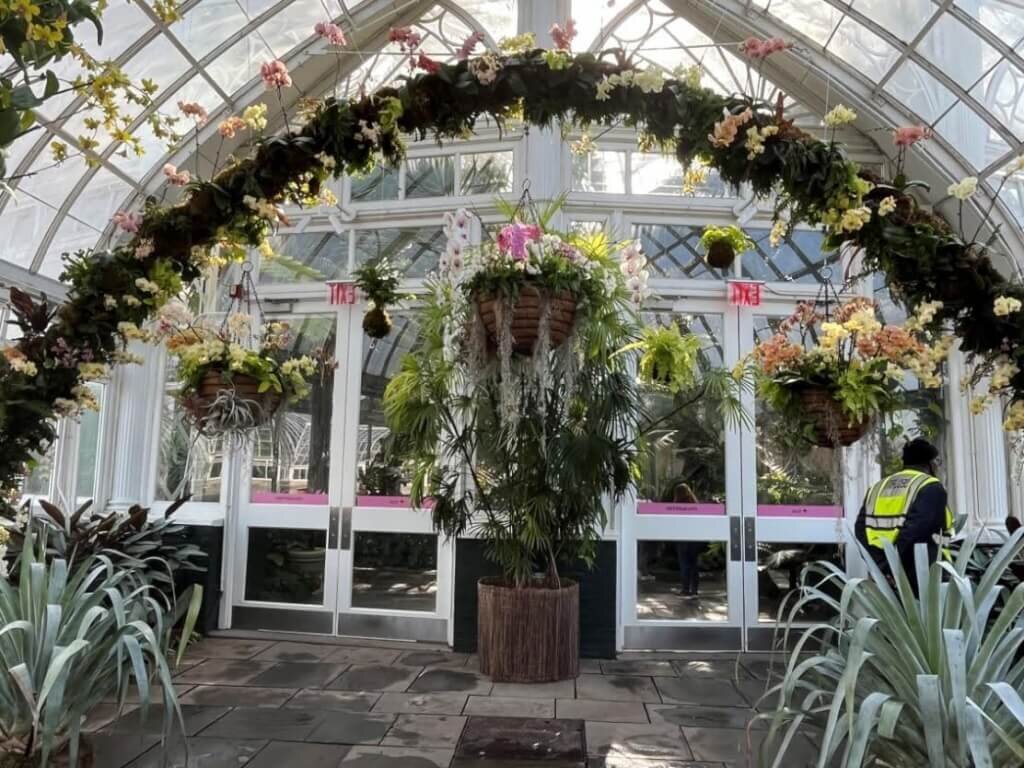How the COVID-19 pandemic changed the face of New York
'16.10.2020'
Vita Popova
The newspapers write that today New York is in agony. Over the past year, he buried 33 deaths from coronavirus, lost a million jobs and fell into a difficult budget crisis. And although the city was at the bottom, this cannot be said about it, the head of the column in Novaya Gazeta Alexander Genis.

“When Trump called New York a 'ghost town', I decided to get to know them and got on my bike. It is better seen from above, and no one interferes in a date with a beloved city in trouble, ”the author explained his idea.
His journey began in the north of Manhattan: “I drove out to Broadway and immediately found a two-story sex shop, hiding behind the name 'Romantic Depot' and offering 100 objects beyond my fantasies. “What is typical,” I noted with joy, “the theaters were closed until spring, the opera until autumn, but nobody canceled the eros”.
Next was Central Park. “Spread over fifty blocks, it used to be an oasis among the bustle of the city, but now, when it has noticeably diminished, it has become what it was intended to be - a zone of fun and relaxation. A wind-blown quarantine refuge, the park sounded like never before. The Hare Krishnaites are located in a large meadow. Outsiders sang along to them, who quickly learned simple, but sacred words: “Hari Krishna, Krishna hari” ", - Alexander describes what he saw.
There are still many musicians on the streets of New York today. “An unemployed diva sang an aria under the bridge. Another bridge was occupied by a homeless man who preserved a saxophone from his past life and faith in the generosity of passers-by. A jazz quartet of old people gathered at the crossroads of the two main paths, who were not too lazy to bring a double bass to the park, ”the author added.
It seems that the townspeople yearned for living art. “Having reached the meadow under the shade of old plane trees, I was convinced of this. An entire orchestra played pre-war hits, and amateurs and professionals danced to them. In many of them it was easy to recognize (by twisted footsteps and mind-blowing steps) the ballerinas who were left idle. They recklessly took their souls on the grass and got a standing ovation, cleaner than in the neighboring Lincoln Center, ”said Genis.
The author then went to the respectable city center. "Because of the quarantine, noticeable changes have occurred with him, and for the better," he said.
New York is famous for its restaurants. “Restaurants are replacing the whole world in New York. This is a concentrated exotic, and a curmudgeon's overseas vacation, and an encyclopedia of other people's tastes, and an excuse for the vices of a metropolis. The blow was all the more terrible when the restaurants closed. Eaters scared by the virus awkwardly cooked what they could in tiny, unsuitable kitchens, where a refrigerator was superfluous. A Slavist friend of mine kept books, paper, paper clips in it and didn’t turn it on so as not to catch a cold, ”the column author shared his impressions.
On the subject: New York tightens quarantine in COVID-19 hot spots: not everyone is happy
As soon as the virus was brought under control in New York and moved further in America, Mayor Bill de Blasio allowed the townspeople to eat outdoors. This order changed the face of the city. “New York has turned inside out. The fluently set tables got out and filled the sidewalks, courtyards, nooks and crannies, even the pavement, which the cooking repulsed from the cars. Overnight, the center of Manhattan began to resemble the Latin Quarter of Paris, and the south, thanks to the bushes and light bulbs, resembled Trastevere in Rome, ”Alexander continued his story.
Hungry for public food and lively communication, the townspeople happily filled the terraces of restaurants and cafes. “Everyone laughed for no obvious reason. The men were noisily ill during the matches in front of the TVs brought out into the street. Football, unfortunately, was American, ”he said.
Outwardly, New York has not changed, but a real drama unfolds inside. “If you like, the tragedy is unfolding in Manhattan skyscrapers, which are still empty. Only 10 percent of employees returned to their jobs, and it does not seem that the rest will be able to be driven there, ”explained Genis.
However, money is what makes New York New York. It is here that the world business center is located. “He makes financial transactions (and trades in diamonds: I had no idea that they constituted the main export of the city),” the author of the column reveals the secrets of the megalopolis. - Once it was different. New York worked with his hands. The most influential was the local tailors union. But now there is only one left of them, a bronze one, which sits at a sewing machine on Seventh Avenue, still called Fashionable. "
The last stage of the deindustrialization of New York in the late 1970s, which the author found personally, was, in his words, "an eerie sight." “Former workshops with huge windows to save on electricity were empty. Only insolent rats lived in them, who were not afraid to run across the grassy streets. One, which was then called West Broadway, seemed to be a quote from a dystopia: this is how the cinema depicts the empty world after the atomic war, ”Genis recalls.
But decades have passed, and today "the ruins of a dead industrial era have become the most luxurious area of Manhattan - famous throughout the world of Soho." And the most Western Broadway, where rats once ran, are filled with galleries, boutiques and godlessly expensive restaurants. “That said, the Soho area hasn't changed that much. It's just that industrial culture became post-industrial and learned to appreciate what the previous one considered utilitarian and ugly. Workshops have turned into lofts, windows - into shop windows, fragments of machines - into decorative ornaments, ”the author states.
Forty years ago, one in seven people in New York City received benefits, and the municipal government did not have enough money to clean up the trash. However, the city coped with the crisis. “He rethought himself. From a working city, it became an entertainment city. The first to come to Soho were artists, like the then poor Rauschenberg. They were followed by the bourgeois "dentists", as they were called in "Stray Dog". Everyone is interested in bohemia. Where art lives, and we want to live, ”Alexander reflects.
Soon, "the rich squeezed out the poor," and the artists moved to Brooklyn. “But it was too late. Soho is still the most original part of Manhattan, where I always bring visitors to show off the entrepreneurial nature and unsinkability of New York, "the author wrote with pride.
“Today, New York, which has survived its zenith shortly before the pandemic, is in the same position in which I found it,” he says. - Again, half the city sits on unemployment benefits. Again, the authorities have no money to clean up the trash. And again New York is saying goodbye to the past, only this time it's not with factories and factories, but with the offices that filled the one-hundred-story towers, which now stand empty, ruining brokers and homeowners. "
And today, Alexander reflects, as it did decades ago, New York needs to "carry out a mental upheaval." “The city must make a“ deophization ”. Although there is no such word yet, it is clear that it is necessary. In order for skyscrapers to be filled with people again, offices need to be turned into apartments and residents should be lured into the city, ”he said.
It is not easy to do this today, when its wealthy residents are fleeing from the metropolis. “The rich buy homes in the mountains and forests, most often in Vermont, which is suddenly swollen with millionaires. This is a big blow to the economy - there is no one to pay taxes. But our stupid mayor was even glad of this. De Blasio, having received the city in perfect condition, declared his goal to correct it at the expense of property equality, ”said Genis.
On the subject: 14 things in New York that everyone who leaves there misses
The author hopes that when another mayor soon replaces this mayor, he will understand that the main value of New York is New York itself. “With his frantic energy, cosmopolitan nature, great resourcefulness and stoic readiness to accept the new, whatever it may be. As long as it is interesting to live in New York, the creators of the future and its wealth will be drawn here instead of those who left the city. Facebook, by the way, has already rented a huge and luxurious former post office for its headquarters. And this means that New York is back, ”sums up the author.
As previously wrote ForumDaily New York:
- Since early spring, when the COVID-19 pandemic swept New York City, residents of the metropolis began to think about moving. And while some are planning, others are making their plans a reality. We wrote about the places where residents of the Big Apple most often move. here.
- 44% of high-income New Yorkers said they have considered leaving the city in the past four months. We wrote about this in this publication.
- The fallout from the coronavirus pandemic heavily influenced the decision of many city dwellers to move. Read about what exactly makes New Yorkers leave the city. in this material.







